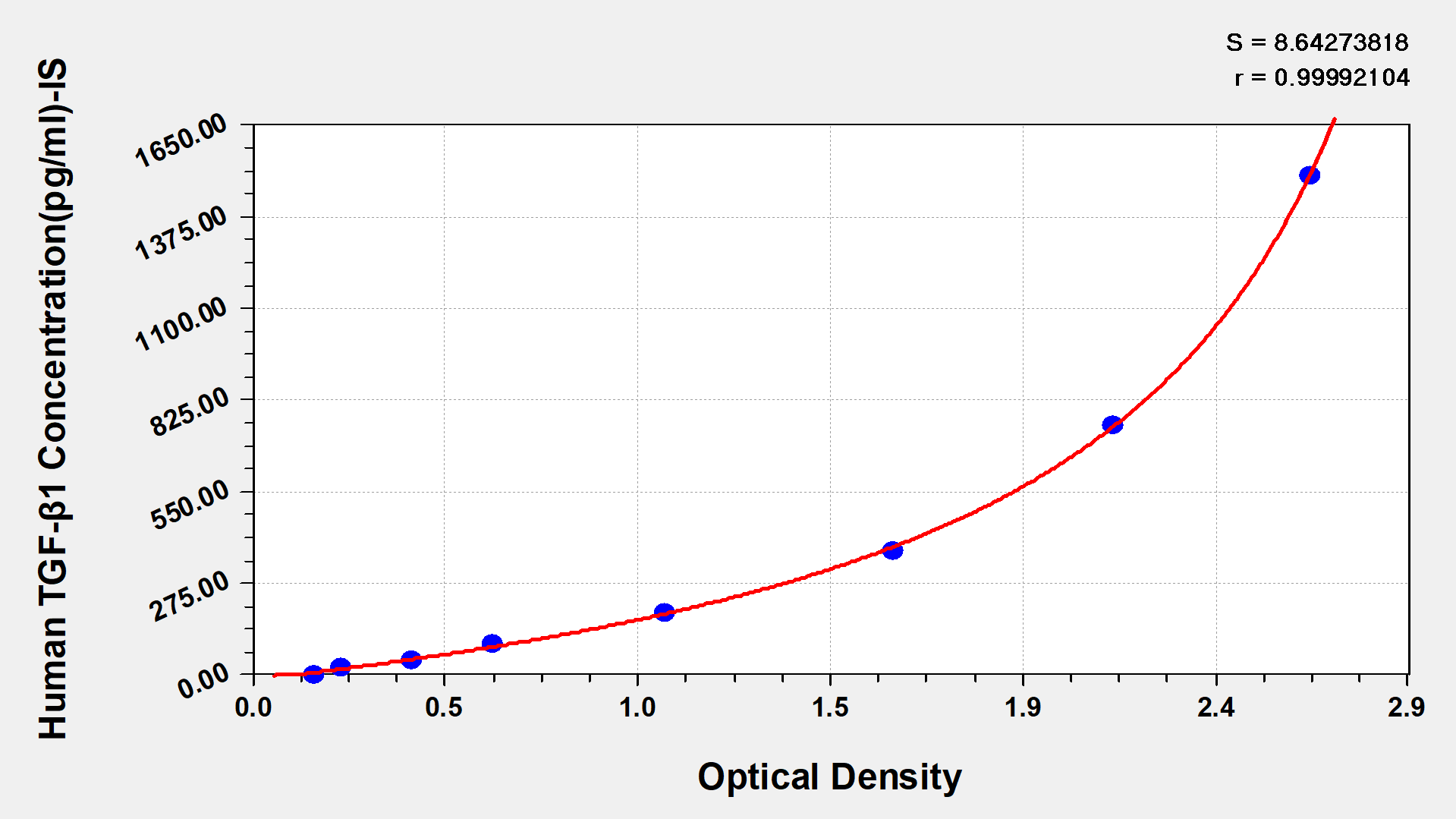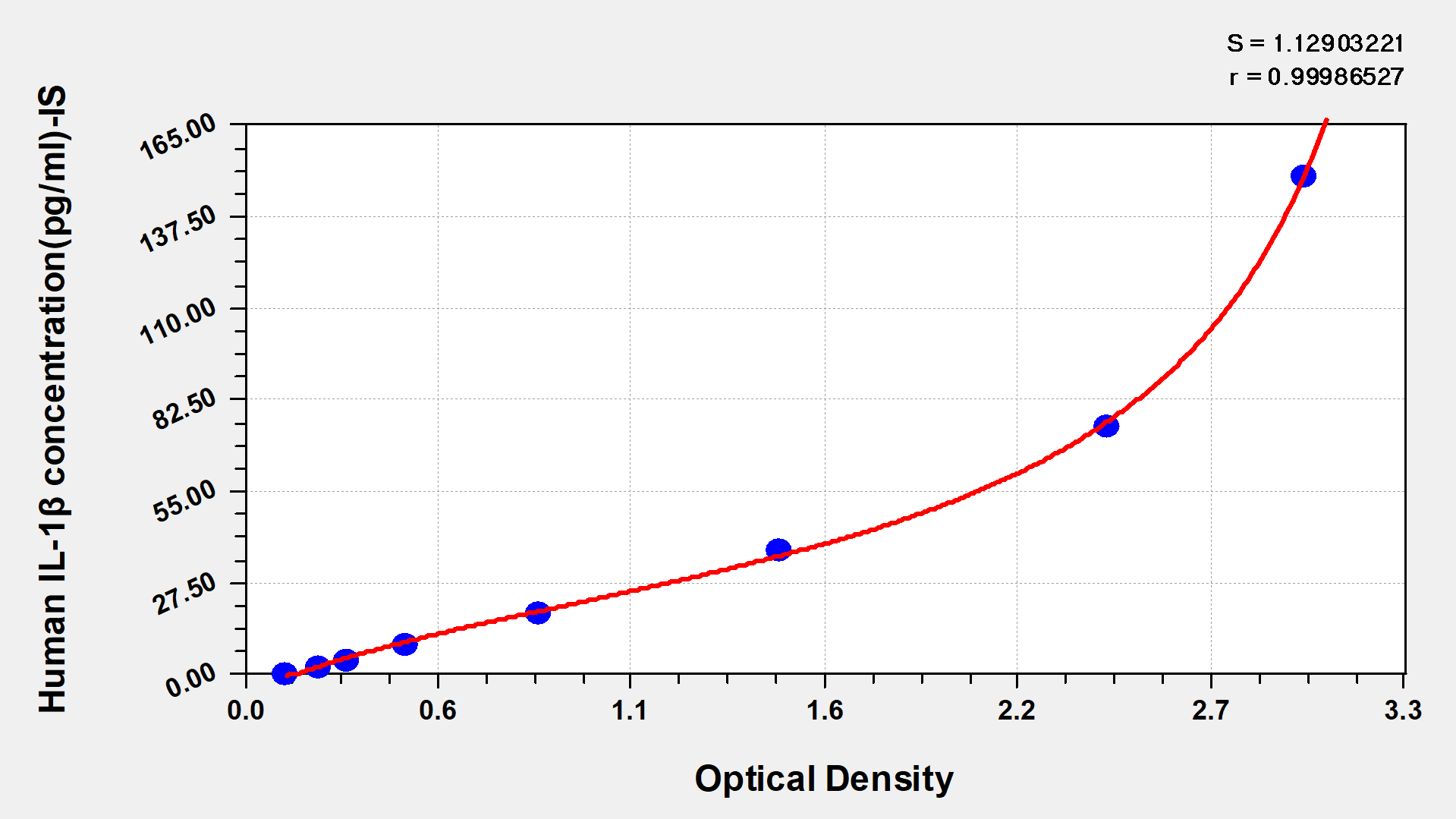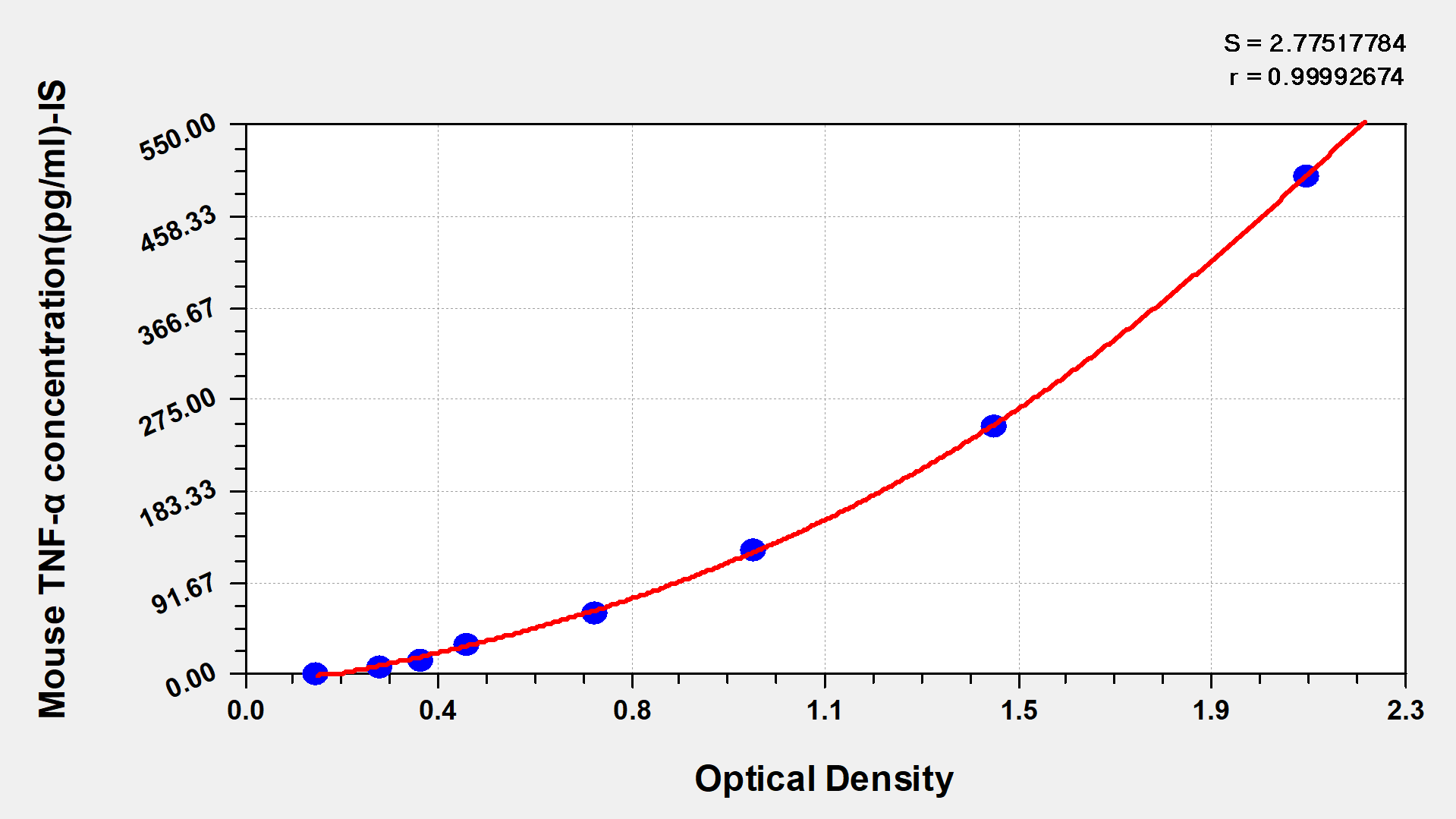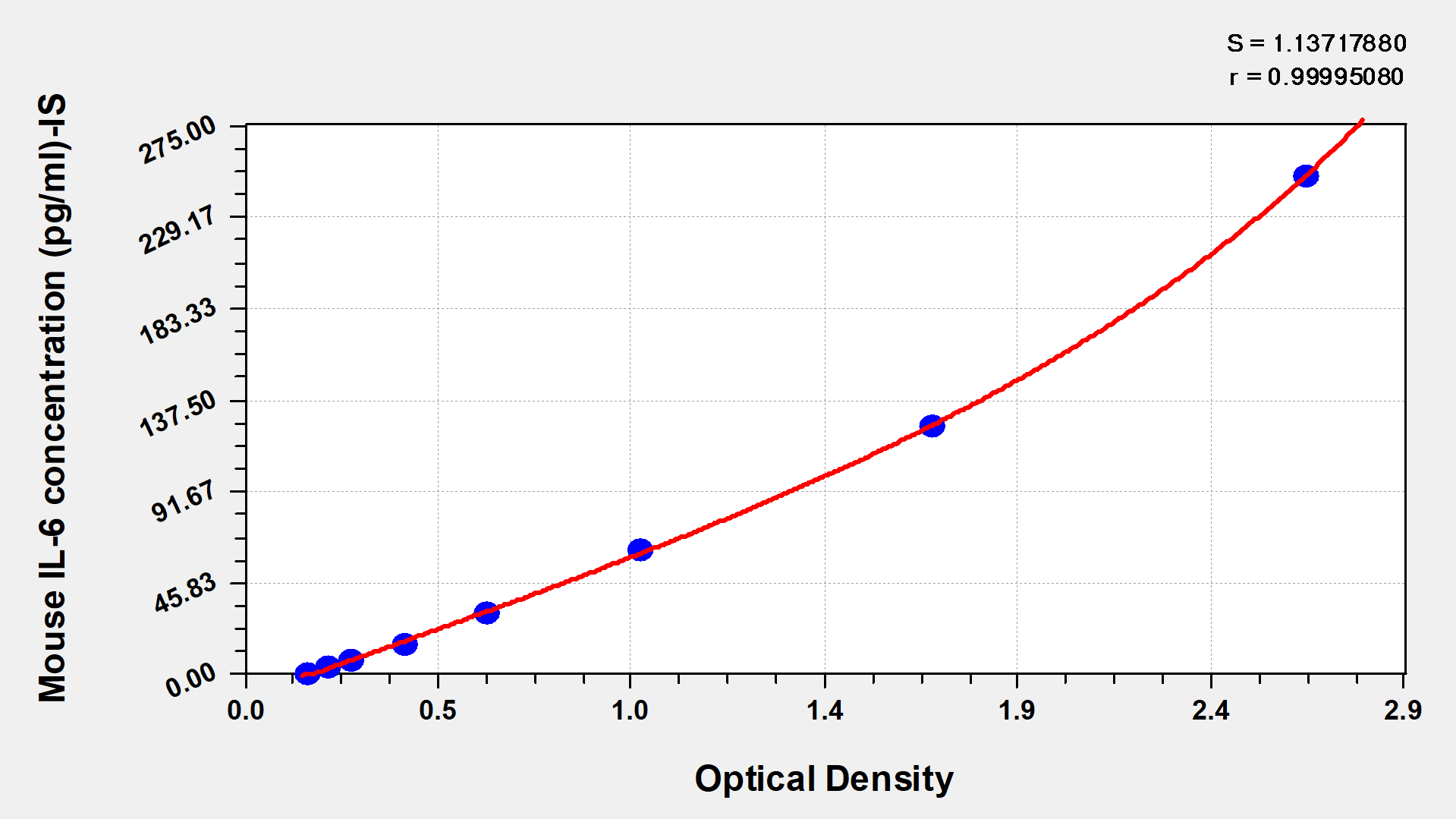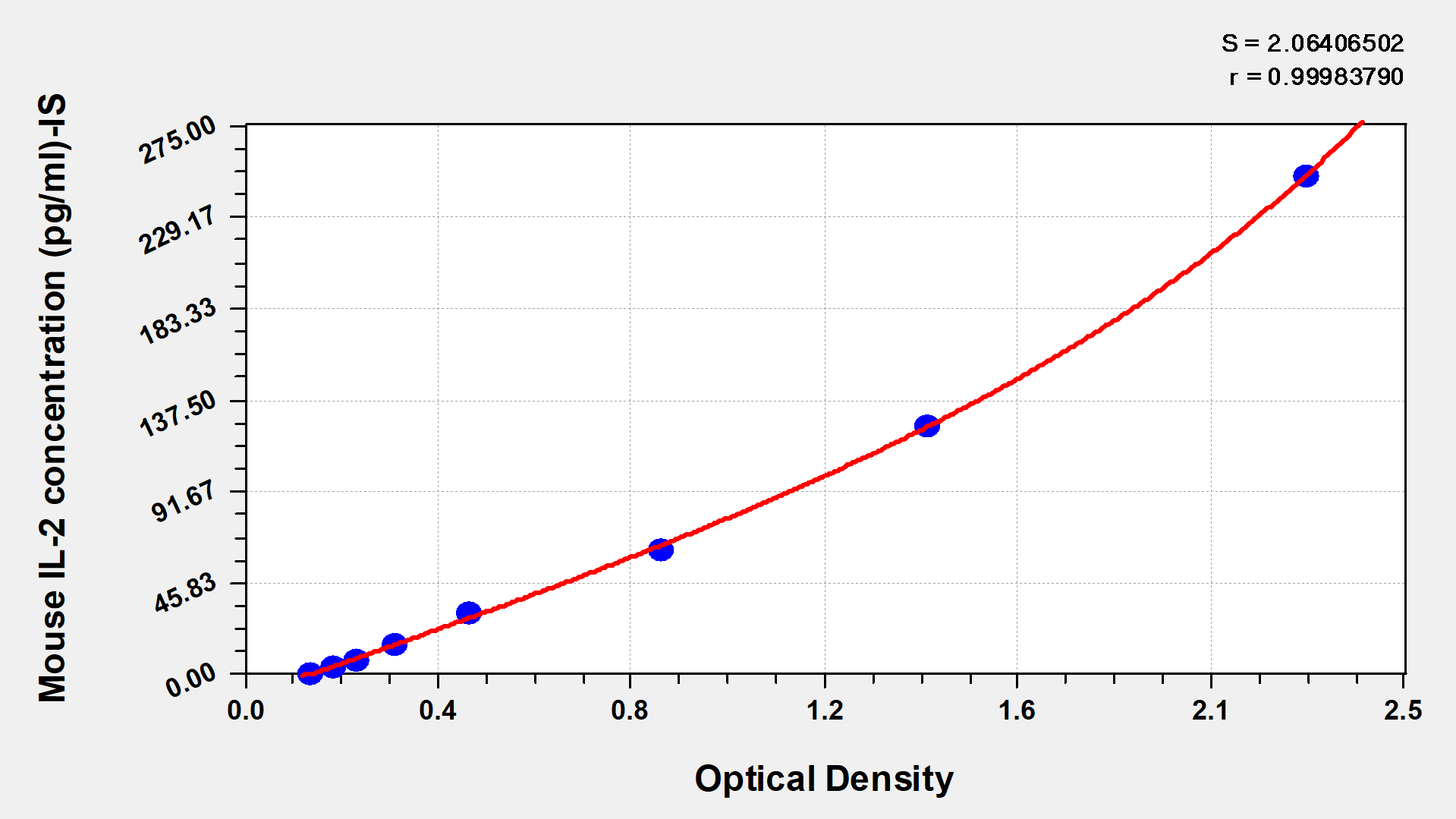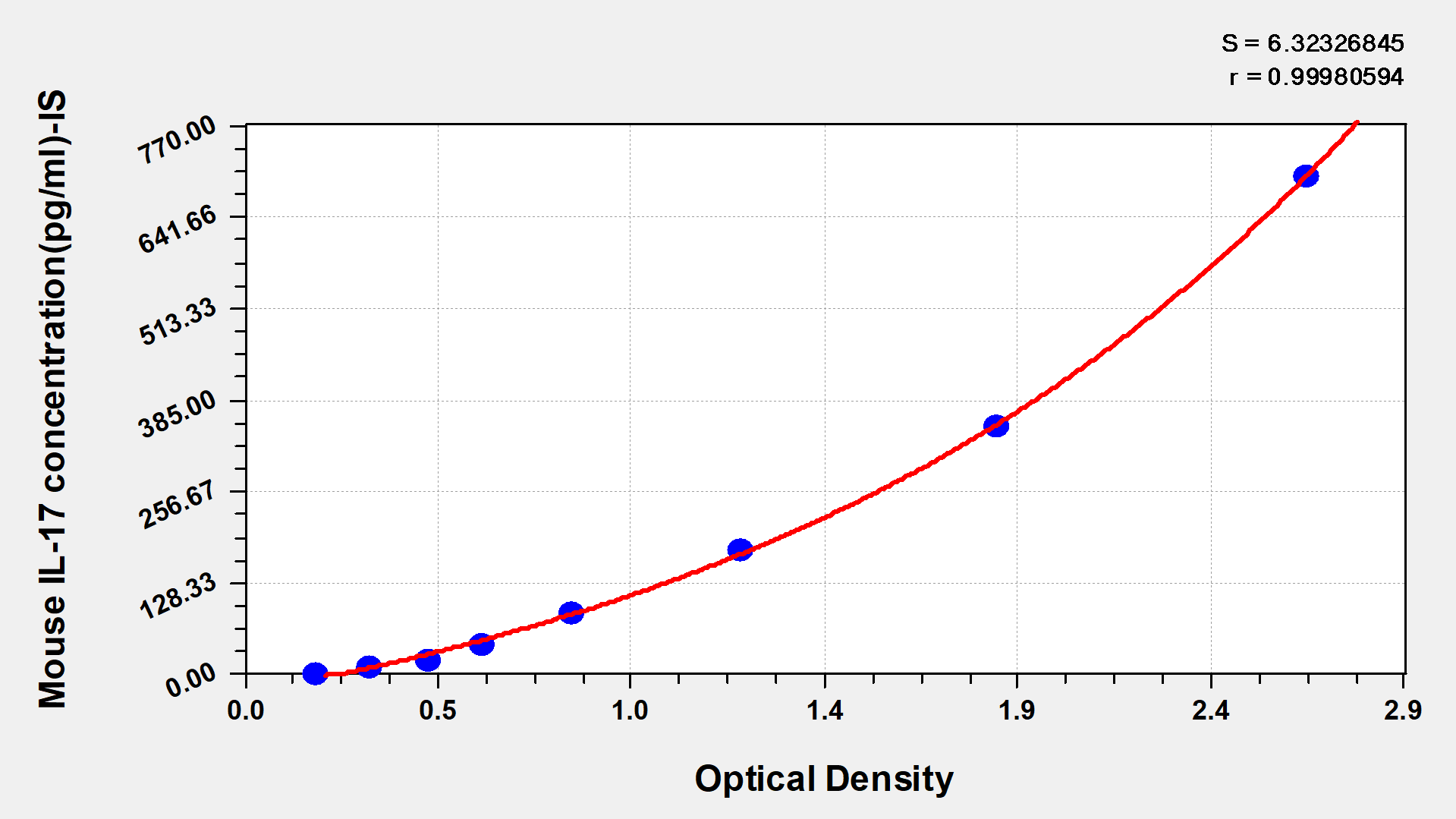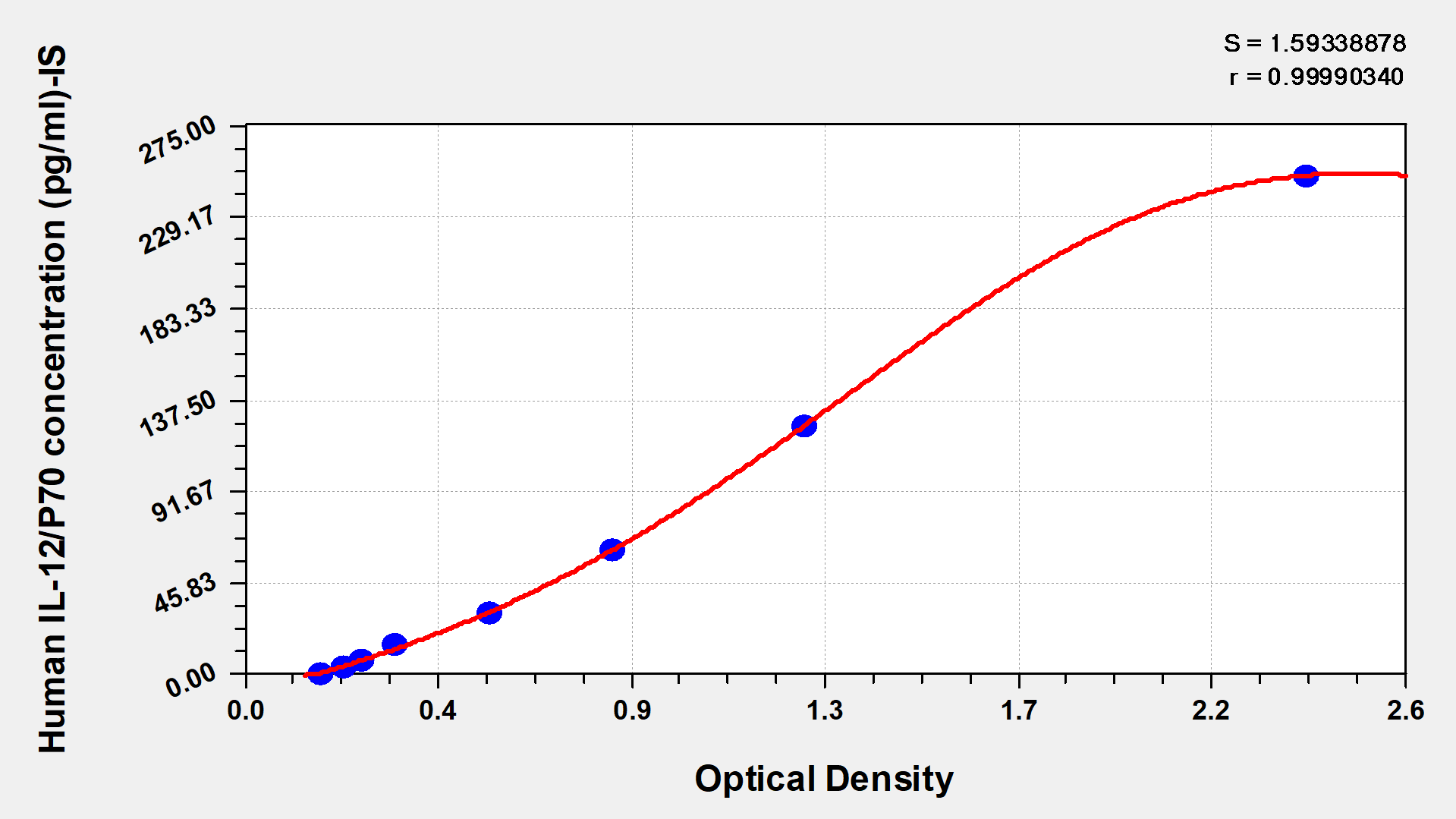Mouse Tumor necrosis factor ligand superfamily member 14(TNFSF14) ELISA kit
-
中文名稱:小鼠腫瘤壞死因子配體超家族成員14(TNFSF14)酶聯(lián)免疫試劑盒
-
貨號:CSB-EL023991MO
-
規(guī)格:96T/48T
-
價(jià)格:¥3600/¥2500
-
其他:
產(chǎn)品詳情
-
產(chǎn)品描述:小鼠腫瘤壞死因子配體超家族成員14(TNFSF14)酶聯(lián)免疫試劑盒(CSB-EL023991MO)為雙抗夾心法ELISA試劑盒,定量檢測血清、血漿、組織勻漿樣本中的TNFSF14含量。TNFSF14是重要靶點(diǎn)。它屬于腫瘤壞死因子超家族,在免疫調(diào)節(jié)、炎癥反應(yīng)等方面發(fā)揮關(guān)鍵作用。研究發(fā)現(xiàn)其與腫瘤發(fā)生發(fā)展、自身免疫疾病等密切相關(guān),通過與受體結(jié)合激活下游信號通路,為相關(guān)疾病治療研究提供新方向。試劑盒檢測范圍為25 pg/mL-1600 pg/mL,該產(chǎn)品適用于科研領(lǐng)域探究感染性疾病、自身免疫疾病或腫瘤模型中TNFSF14的動態(tài)變化本品僅用于科研,不用于臨床診斷,產(chǎn)品具體參數(shù)及操作步驟詳見產(chǎn)品說明書。
-
別名:Tnfsf14 ELISA kit; LightTumor necrosis factor ligand superfamily member 14 ELISA kit; CD antigen CD258) [Cleaved into: Tumor necrosis factor ligand superfamily member 14 ELISA kit; membrane form; Tumor necrosis factor ligand superfamily member 14 ELISA kit; soluble form] ELISA kit
-
縮寫:
-
Uniprot No.:
-
種屬:Mus musculus (Mouse)
-
樣本類型:serum, plasma, tissue homogenates
-
檢測范圍:25 pg/mL-1600 pg/mL
-
靈敏度:6.25 pg/mL
-
反應(yīng)時(shí)間:1-5h
-
樣本體積:50-100ul
-
檢測波長:450 nm
-
研究領(lǐng)域:Others
-
測定原理:quantitative
-
測定方法:Sandwich
-
數(shù)據(jù)處理:
-
貨期:3-5 working days
引用文獻(xiàn)
- Local angiotensin II contributes to tumor resistance to checkpoint immunotherapy Guozhu Xie.et al,Journal for ImmunoTherapy of Cancer,2018
- Shining LIGHT on the metabolic role of the cytokine TNFSF14 and the implications on hepatic IL-6 production Bernadette M Saunders.et al,Immunology and Cell Biology,2017
相關(guān)產(chǎn)品
靶點(diǎn)詳情
-
功能:Cytokine that binds to TNFRSF3/LTBR. Binding to the decoy receptor TNFRSF6B modulates its effects. Activates NFKB and stimulates the proliferation of T-cells. Acts as a ligand for TNFRSF14/HVEM. Upon binding to TNFRSF14/HVEM, delivers costimulatory signals to T cells, leading to T cell proliferation and IFNG production.
-
基因功能參考文獻(xiàn):
- bone marrow cells from Tnfsf14 deficient mice appeared to promote diet-induced obesity, insulin resistance and reduced FGF21 levels in white adipose tissue and liver PMID: 29359470
- Blockade of LIGHT markedly suppressed airway smooth muscle hyperplasia and inflammatory responses, which might be modulated through HVEM-NFkappaB or c-JUN pathways. PMID: 29460021
- The LIGHT (Tumour necrosis factor ligand superfamily member 14, TNFSF14)/Lymphotoxin beta-Receptor(LTbeta-R) pathway, which is involved in T-cell and macrophage activation, was diminished in plasma and in apoE-/-Irs2+/-HL-/- atheromas. PMID: 27172975
- LIGHT promote myeloid differentiation of Hematopoietic stem/progenitor cells via LIGHT receptor signaling. PMID: 28422285
- LIGHT signalling pathway combined with IFN-gamma induces beta cells apoptosis via an NF-kappaB/Bcl2-dependent mitochondrial pathway. PMID: 27241100
- Increasing LIGHT expression increased T-cell proliferation, activation, and infiltration, resulting in enhanced tumor-specific immune-mediated tumor regressions in primary tumors and colorectal liver metastases. PMID: 28249900
- Together, these results demonstrate that the LIGHT signaling pathway is not only required for inflammatory cytokine production as part of the host response to chlamydial infection, but also influences the differentiation of CD4(+) CD25(+) FoxP3(+) Treg cells, both of which may be essential for control of C. psittaci respiratory tract infection. PMID: 27725282
- These results expose the relevance of LIGHT/LTbetaR/HVEM interaction for the potential therapeutic control of the allogeneic immune responses mediated by alloreactive CD8 T cells that can contribute to prolong allograft survival. PMID: 26752542
- Mechanistically, intratumoral LIGHT induces pericyte differentiation and normalization via Rho kinase signaling. Minute amounts of LIGHT act in a paracrine fashion to trigger an amplifying cascade involving transforming growth factor beta (TGF-beta) from peri-vascular macrophages. PMID: 26711337
- localized overexpression of Tnfsf14 potently enhances muscle regeneration, and that this regenerative capacity of Tnfsf14 is dependent on Akt signaling. PMID: 26720335
- LIGHT-HVEM interactions stimulate IL-12 production by DCs during Leishmania donovani infection. Blockade of LIGHT-LTbetaR interactions dramatically enhanced early anti-parasitic immunity. PMID: 21998581
- LIGHT controls TSLP to drive pulmonary fibrosis. PMID: 25680454
- The tumor necrosis factor superfamily molecule LIGHT promotes keratinocyte activity and skin fibrosis. PMID: 25789702
- LIGHT signal pathway is not correlated with protection against Chlamydia muridarum urogenital tract infection. PMID: 26211324
- LIGHT protein is rapidly and transiently expressed after T-cell activation, and this expression is stronger on CD8 T cells than on CD4 T cells PMID: 25226173
- Chronic wounds in TNFSF14 KO mice could be induced by exacerbating the redox imbalance by further inhibiting the antioxidant enzymes and by infecting the wounds with biofilm-forming bacteria isolated from the chronic wounds that developed naturally in these mice. PMID: 25313558
- Tnfsf14(-/-) mice develop more severe colitis than control mice. LIGHT signals through the lymphotoxin beta receptor in the colon to regulate the innate immune response and mediate recovery from intestinal inflammation. PMID: 24560868
- Expression of LIGHT on donor cells is not required for disease induction; however, its expression on host cells is a decisive factor to limit disease progression and tissue damage. PMID: 23720813
- interaction of LIGHT with LTbetaR on hepatocytes, but not Kupffer cells, is sufficient to down regulate hepatic lipase expression and that this effect can be independent of LIGHT's costimulatory function. PMID: 23355893
- LIGHT promoted MSCs differentiation into adipocyte which was confirmed by Oil Red O Staining Assay. Since either MSCs or adipocytes are the major cell population in bone marrow niche, we then suggest that LIGHT regulate bone marrow niche PMID: 22930663
- Here we show that deletion of tumor necrosis factor superfamily member 14 (TNFSF14/LIGHT) leads to impaired wounds in mice that have the characteristics of nonchronic and chronic ulcers. PMID: 22564230
- LIGHT regulation of Lymph node hypertrophy in the generation of an adaptive immune response PMID: 21572030
- expression of tumor necrosis factor superfamily member 14 and lymphotoxin-beta receptor by motoneurons in vivo correlates with the preferential expression of interferon-gamma at disease onset and symptomatic stage in amyotrophic lateral sclerosis mice PMID: 21072055
- Trimerization of soluble mLIGHT is essential for its biological activity. PMID: 21400099
- LIGHT is expressed on lung inflammatory cells after allergen exposure. LIGHT-deficient mice also show an impairment in fibrosis and smooth muscle accumulation. PMID: 21499267
- LIGHT interaction with the LTbetaR plays a critical role in liver inflammation but is not required for LIGHT-mediated adeno-associated virus clearance. PMID: 20498840
- LIGHT enhances the expression of SOCS3 during stimulating BMDC maturation. PMID: 17718431
- LIGHT could potentiate the proliferation of T lymphocytes and induction of T CD8(+) cells performing by measuring Granzyme B, a specific marker of cell mediated immunity and virus neutralization antibody titer. PMID: 20097089
- LIGHT-deficient mice display reduced signs of intestinal inflammation in the model of dextran sodium sulphate-induced colitis PMID: 20067544
- T cell to T cell-mediated LIGHT/HVEM-dependent costimulation is a significant component of the host response leading to cardiac allograft rejection PMID: 11901205
- LIGHT selectively plays a role in CD8+ T cell activation but is not required for Th cell-dependent humoral responses. PMID: 11994431
- targeted disruption causes defects in costimulatory T cell activation and reveals cooperation with lymphotoxin beta in mesenteric lymph node genesis PMID: 12070288
- LIGHT, signaling via lymphotoxin beta-specific receptor, in supporting the development and maintenance of the lymphoid microenvironment PMID: 12115617
- LIGHT, although a ligand, can receive LIGHT cross-linking enhanced p44/42 mitogen-activated protein kinase activation after TCR ligation. This study reveals a new function and signaling event of LIGHT. PMID: 12384428
- LIGHT, a new member of the TNF superfamily [review] PMID: 12456019
- LIGHT plays a role in negative selection of thymocytes via inducing the apoptosis of thymocytes bearing high affinity T cell receptors. PMID: 12682226
- forced expression of LIGHT in the tumor environment induces a massive infiltration of naive T lymphocytes that correlates with an upregulation of both chemokine production and expression of adhesion molecules PMID: 14704792
- In graft arterial disease, the LIGHT pathway plays important roles in the regulation not only of T-cell activation but also of SMC proliferation. PMID: 15178556
- Inhibition of LIGHT/herpes simplex virus entry mediator and LIGHT/lymphotoxin beta receptor interactions decreases mortality in MHC class I and II disparate graft-vs-host disease. PMID: 15814693
- The expression of LIGHT inside tumors leads to rapid rejection in a natural killer-dependent manner. PMID: 16223768
- Our studies thus identify a what we believe to be a novel function of soluble LIGHT in vivo and offer a potential target for therapeutic interventions in hepatic inflammatory diseases PMID: 16557300
- We identified lymphotoxin (LT) and LIGHT, tumor necrosis factor cytokine family members that are primarily expressed on lymphocytes, as critical regulators of key enzymes that control lipid metabolism PMID: 17431181
- selective blockade of LIGHT-lymphotoxin beta receptor signaling protects mice from experimental cerebral malaria caused by Plasmodium berghei ANKA PMID: 19017933
- The inflammatory interaction between LIGHT & PAR-2 may be operating in vivo within an atherosclerotic lesions in ApoE(-) mice. LIGHT/PAR-2-driven inflammation could be a pathogenic loop in atherogenesis. PMID: 19023130
- LIGHT/HVEM signaling negatively regulates neurite growth from developing sensory neurons via NF-kappa B inhibition. PMID: 19211867
顯示更多
收起更多
-
亞細(xì)胞定位:Cell membrane; Single-pass type II membrane protein.; [Tumor necrosis factor ligand superfamily member 14, soluble form]: Secreted.
-
蛋白家族:Tumor necrosis factor family
-
數(shù)據(jù)庫鏈接:
Most popular with customers
-
Human Transforming Growth factor β1,TGF-β1 ELISA kit
Detect Range: 23.5 pg/ml-1500 pg/ml
Sensitivity: 5.8 pg/ml
-
-
-
Mouse Tumor necrosis factor α,TNF-α ELISA Kit
Detect Range: 7.8 pg/ml-500 pg/ml
Sensitivity: 1.95 pg/ml
-
-
-
-



